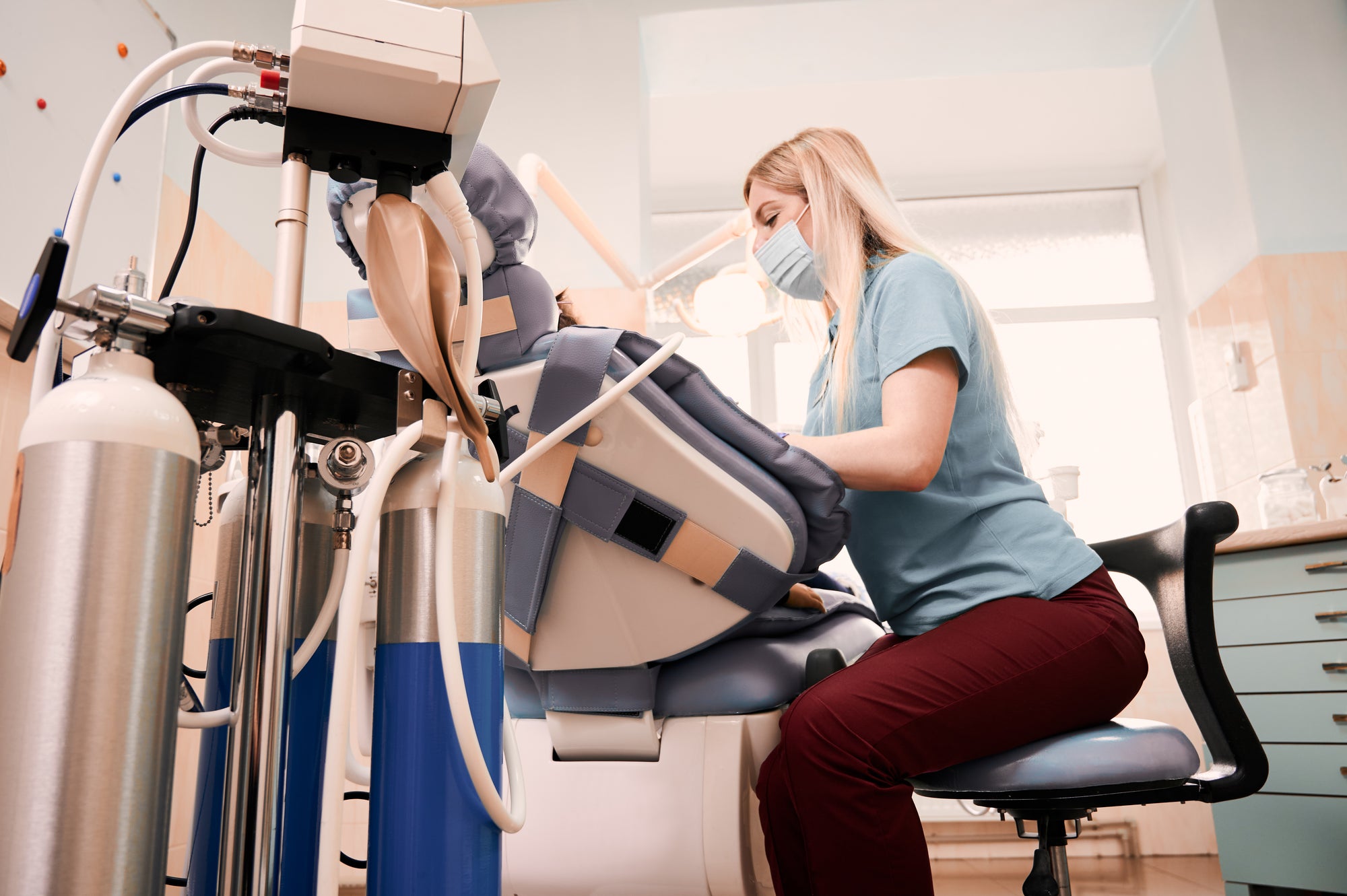

· By Trevor Horne
Improving Surgical Outcomes with Ergonomic Saddle Stools
In surgical environments, the stakes are high, and attention to detail is crucial. While the focus is primarily on patient outcomes, it's essential for surgeons and surgical staff to prioritize their ergonomics in order to perform at their best. Proper ergonomics can ensure that surgical professionals maintain optimal posture and body mechanics, resulting in increased focus, enhanced performance, and reduced risk of work-related injuries.
One innovative solution to improve ergonomics in surgical settings is the incorporation of Saddle Stools. Designed specifically for healthcare professionals, these stools provide optimal posture support, alleviate discomfort, and enable more precise and controlled movements during surgical procedures. By recognizing the unique challenges faced by surgeons and their teams, we can explore the benefits of incorporating Saddle Stools in surgical centers.
Join us in this exploration of the transformative potential of ergonomic Saddle Stools in surgical environments, and discover how investing in ergonomics can contribute to better patient outcomes and improved performance for surgical professionals.
Importance of Ergonomics in Surgical Settings
Ergonomics plays a critical role in maintaining the health and well-being of surgeons and their surgical staff. Prolonged hours in the operating room, coupled with high-stress circumstances, can take a significant toll on the physical well-being of surgical professionals. Proper body mechanics and posture are essential to reducing the risk of work-related injuries and enhancing overall performance. When surgical professionals maintain optimal ergonomics, they can focus their attention on precision and accuracy, resulting in better surgical outcomes and patient care.
Consequences of Poor Posture for Surgeons and Surgical Staff
Poor posture and body mechanics can have various adverse effects on surgeons and their team members, including the following:
- Back and neck pain: Operating for extended hours in awkward positions can lead to stress on the spine, resulting in back and neck pain.
- Fatigue: Muscular strain and poor posture can cause fatigue, decreasing overall attention and focus during surgical procedures.
- Repetitive strain injuries (RSI): Repetitive motions, such as suturing or instrument handling, increase the risk of developing RSI, which can affect tendons, muscles, and nerves.
- Decreased performance: Discomfort from poor posture and inadequate ergonomics can compromise precision and concentration, potentially impacting surgical outcomes.
By addressing these concerns with ergonomically designed equipment like Saddle Stools, surgical professionals can enhance their working conditions and protect their health.
How Saddle Stools Benefit Surgeons and Enhance Performance
Saddle Stools offer several ergonomic benefits for surgeons and their teams:
- Improved posture: The unique design of Saddle Stools promotes a more natural spine curvature and open hip angle, reducing strain on the lower back and encouraging better posture.
- Enhanced comfort: The saddle-shaped seat distributes the body weight more evenly, alleviating pressure on the coccyx and thighs.
- Increased mobility: Smooth casters and swivel bases provide greater ease of movement, allowing surgical professionals to adjust their positions without needing to interrupt procedures.
- Customizable support: Adjustable height and seat tilt mechanisms enable surgical staff to find their optimal working position, reducing the risk of awkward, uncomfortable, or strenuous postures.
The Role of Saddle Stools in Improved Surgical Outcomes
The benefits of using ergonomic Saddle Stools in surgical settings extend beyond the individual comfort of surgeons and their team members:
- Enhanced focus and concentration: Less physical discomfort during procedures allows surgical professionals to maintain optimal focus and precision, leading to better surgical outcomes.
- Reduced risk of errors: Improved ergonomics can minimize the potential for errors and complications stemming from poor body mechanics and fatigue.
- Increased efficiency: Ease of movement and improved comfort with Saddle Stools contribute to increased efficiency in the operating room, streamlining surgical workflows.
- Better patient care: A comfortable and focused surgical team can provide higher-quality patient care, resulting in improved patient experiences and recovery times.
Tips for Choosing the Right Saddle Stool for Your Surgical Center
Selecting the appropriate ergonomic Saddle Stool for your surgical center involves a thoughtful evaluation of several factors:
- Comfort and support: Ensure that the Saddle Stool offers the necessary comfort and support for extended periods of use in a surgical setting.
- Adjustability features: Look for stools with height adjustability, backrest options, and seat tilt capabilities for customizable ergonomics tailored to individual professionals.
- Material and cleanliness: The materials used in the construction of the stool should be durable, easy to clean, and suitable for a sterile operating room environment.
- Cost versus benefits: While budget is an important factor, investing in a high-quality Saddle Stool with necessary ergonomic features will benefit your surgical center in the long run.
Conclusion
Ergonomic Saddle Stools are an innovative solution to address the unique posture and body mechanic challenges faced by surgeons and their staff. Improved ergonomics not only enhances the comfort and well-being of surgical professionals but also contributes to better surgical outcomes and patient care.
ProNorth Medical is a top medical equipment supplier that recognizes the importance of offering dependable and high-quality medical equipment for surgical professionals. We strive to provide exceptional products that cater to the needs of healthcare providers in various fields. Browse through our range of Saddle Stools and experience how investing in ergonomics can elevate the performance and success of your surgical center.
